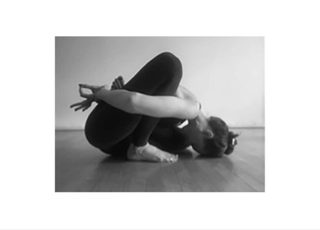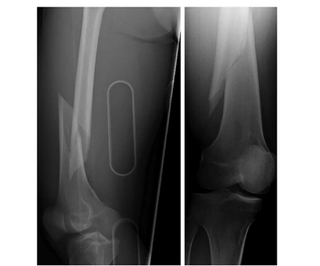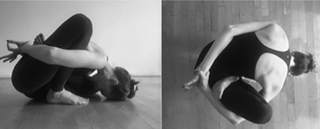Omm…MG! Rare Yoga Injury Breaks Man's Leg

A man in Ireland broke his leg and spent 10 days in the hospital after injuring himself in a surprising way — while practicing yoga.
The 38-year-old yoga enthusiast fractured the thighbone on his right leg while doing a difficult seated yoga pose known as Marichyasana posture B in his morning yoga class, according to a new report of the man's case, which was published online Oct. 9 in the journal BMJ Case Reports. The pose involves sitting down, with the knee bent and drawn up to the chest, and then bending the torso toward the floor.
When the man got into the position, he heard a loud cracking sound and felt enormous pain in his right femur (thighbone). The pain was so excruciating that he collapsed to the ground and needed an ambulance to get to the hospital, according to the case report.

In the emergency room, the man could not straighten out his right leg, and needed IV morphine to dull his pain. X-rays showed he had a "low-energy femoral shaft fracture." [Best Yoga Apps]
The "low energy" term refers to the amount of force that causes the bone to break, said Dr. Andrew Moriarity, an orthopedic resident at St. James's Hospital in Dublin, Ireland, who treated the man and co-authored the case report. Low-energy fractures are sometimes called "stress fractures."
The man's right thighbone was fractured about 4 inches (10 centimeters) above his knee joint, Moriarity said. Low-energy fractures can happen when a person engages in a twisting motion, or falls from a low height, whereas high-energy fractures are those that can result from a car accident or a fall from a significant height, such as a two-story balcony, Moriarity said.
A break like the one the man experienced would be extremely painful, Moriarity told Live Science.
Sign up for the Live Science daily newsletter now
Get the world’s most fascinating discoveries delivered straight to your inbox.
Although yoga is considered a gentle mind-body practice, injuries can and do happen, especially as the activity's popularity rises. Still, this type of fracture is extremely rare in a young, healthy person, and it's even more unusual for it to occur due to yoga, the researchers wrote in their case report.
Rare injury
At the time the man got hurt, autumn 2014, he had been practicing yoga for two years. Over this period, he had progressed to doing increasingly more strenuous styles of yoga and more challenging postures.

At the time of his injury, the man was practicing Ashtanga yoga, a physically demanding style, for an hour every morning.Research suggests that injuries from this style of yoga are more common in the hamstrings, knees and lower back, according to the report.
Two weeks before the fracture occurred, the man felt a dull pain in his right thigh. He sought advice about the problem from a physical therapist, who diagnosed it as a muscle strain in the man's quadriceps, telling him he could return to yoga.
But that probably wasn't a good idea, Moriarity said.
"The pain he felt in his thigh was likely a stress fracture, a warning of impending fracture if he continued to apply stress to this area," Moriarity told Live Science.
To treat his femoral shaft fracture, the man needed surgery to insert a titanium rod inside his thighbone, which would allow him to walk safely, Moriarity said.
The reason this man sustained such a rare injury from practicing yoga, Moriarity said, "was likely due to repetitive stress on the thighbone, combined with a weakened bone state, known as osteopenia."
Indeed, a bone scan taken at the hospital revealed that he the man had did in fact have osteopenia, a condition in which his bone density is lower than normal, which could increase his risk for low-energy fractures, Moriarity explained.
Five months after his release from the hospital, the man could walk almost pain free and had resumed practicing yoga, but was doing only less-demanding postures.
This was a very unusual case, and most yoga enthusiasts don't injure themselves, Moriarity said. Even so, no matter what sport or physical activity a person enjoys, it's important to remember "to listen to your body," he recommended.
Follow Live Science @livescience, Facebook & Google+. Originally published on Live Science.
Cari Nierenberg has been writing about health and wellness topics for online news outlets and print publications for more than two decades. Her work has been published by Live Science, The Washington Post, WebMD, Scientific American, among others. She has a Bachelor of Science degree in nutrition from Cornell University and a Master of Science degree in Nutrition and Communication from Boston University.
